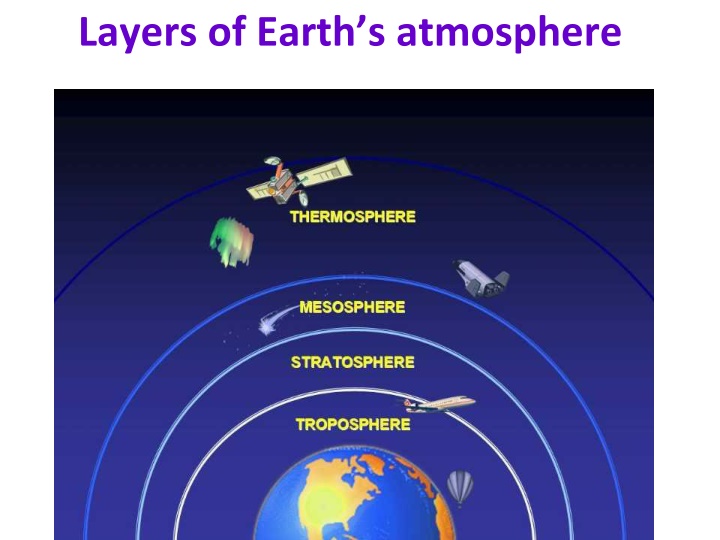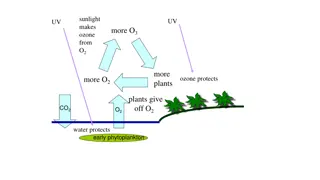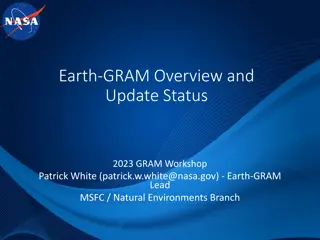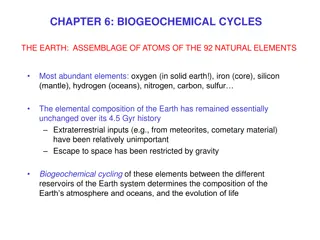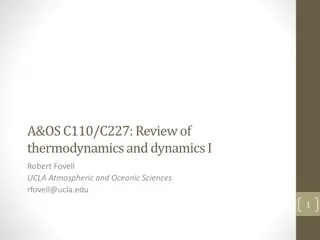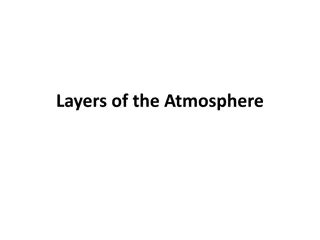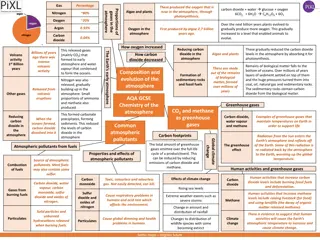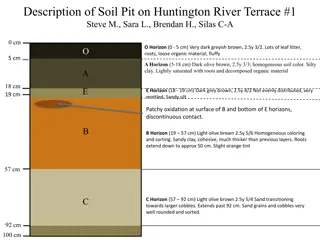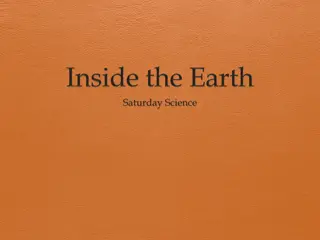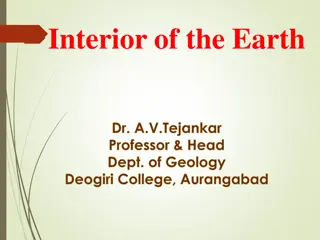Layers of Earth's Atmosphere Evolution
Atmosphere formation, evolution, and composition explained in layers - Troposphere, Stratosphere, Mesosphere, Thermosphere, Exosphere, Ionosphere. Learn about their characteristics and functions.
Download Presentation

Please find below an Image/Link to download the presentation.
The content on the website is provided AS IS for your information and personal use only. It may not be sold, licensed, or shared on other websites without obtaining consent from the author.If you encounter any issues during the download, it is possible that the publisher has removed the file from their server.
You are allowed to download the files provided on this website for personal or commercial use, subject to the condition that they are used lawfully. All files are the property of their respective owners.
The content on the website is provided AS IS for your information and personal use only. It may not be sold, licensed, or shared on other websites without obtaining consent from the author.
E N D
Presentation Transcript
How was the atmosphere formed? Atmosphere has changed (evolved) over time. Gases are held near the surface by gravity. Earth s early atmosphere was outgassed from the interior through release of gases and volcanic eruptions. Many factors, such as solar radiation and photosynthesis, help the atmosphere to develop into what we enjoy today.
Troposphere Layer closest to the earth People, plants & animals exist here Clouds, storms, precipitation are in this layer Temperature decreases (gets colder) as altitude increases
Stratosphere Starts at top of troposphere to about 50 km Where most jets fly Ozone layer is found here Temperature increases (gets warmer) with altitude because ozone absorbs UV rays which warm the air
Mesosphere 50-80 km above the earth s surface Coldest layer of the atmosphere Temperature decreases with altitude Meteors burn at this layer
Thermosphere Temperature increases with altitude Hottest layer - 1000+ degrees Air is so thin that temperature cannot be measured with a thermometer...but as motion of the few particles that are there. Divided into two sublayers: Exosphere Ionosphere
Exosphere Top of the thermosphere Satellites orbit here
Ionosphere Auroras occur here Radio waves are reflected back to Earth from this layer Sun s energy breaks apart atoms into IONS at this level
